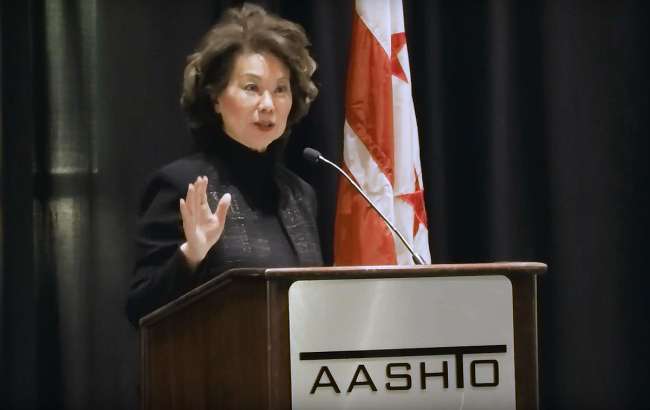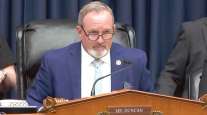Staff Reporter
Chao Hints Document Will Flesh Out Infrastructure Plan

WASHINGTON — Transportation leaders should look forward to a document coming out in the next few days that will provide additional details about President Donald Trump’s infrastructure plan, according to Transportation Secretary Elaine Chao.
Chao delivered keynote remarks at the American Association of State Highway and Transportation Officials’ legislative meeting in Washington Feb. 28. She said the publication, called the “President’s Initiative for Rebuilding Infrastructure in America,” was supposed to be released Feb. 28.
“This is the work of a lot of really wonderful people at the department, and it provides fuller picture behind the reasoning of the president’s infrastructure plan and the goals as well,” Chao said.
RELATED: Under EPW grilling, Chao defends infrastructure plan
The White House’s funding principles unveiled Feb. 12 would rely significantly on nonfederal funds to reach a $1.5 trillion top line over 10 years. Overall, $200 billion in direct federal funds would be sought to achieve the plan’s desired top line. From that, $100 billion would be made available for an incentives program for states and municipalities, $50 billion would be allocated for rural projects through block grants to governors, $20 billion would be dedicated for a “transformative projects program” for futuristic contrivances, $20 billion would be used to enhance federal credit programs and broaden the use of private activity bonds and $10 billion would back the creation of a Capital Financing Fund.
According to Chao, the federal government owns 10% of country’s infrastructure and contributes 14% of all infrastructure spending. The rest of the country’s infrastructure is owned and funded by state and local government agencies. Chao’s comments largely echoed the infrastructure plan’s principles, which emphasize a shift toward state and private sector financing efforts.
Federal fuel taxes, which are used for the Highway Trust Fund, have not increased since 1993. The fund assists states with maintenance and construction projects.
“This administration believes that empowered decision-making at the state and local level is really important,” Chao said. “We really believe it’s at the state and local level that the best knowledge about infrastructure and the needs of the community are realized.”
Streamlining the permitting process for infrastructure projects and reducing regulatory burdens are hallmarks of Trump’s infrastructure proposal. Chao said processes will be put in place to ensure that the permitting of “complicated, multiagency projects” can meet the administration’s ideal for an expedited timeline.
“This means less paperwork and more timely improvements that will better protect the environment and also our quality of life,” Chao said.
Chao pointed out the ways in which the Trump administration’s goals signal a departure from the previous administration’s practices. Over the past eight years, U.S. DOT’s increased regulations cost more than $3 billion a year, according to Chao. In 2017, the agency decreased the cost of regulatory spending by $312 million. Chao forecasted that DOT is on track to reduce the cost of regulations by over $500 million in 2018.
Chao cited that more than half of DOT’s 158 rulemakings in 2017 were deregulatory, while 14% of the agency’s 132 rulemakings in 2016 were deregulatory.
“In the last decades, overly burdensome regulations have made these challenges more difficult than necessary. We are keeping this torturous history in mind as we advance the president’s infrastructure plan and as we look forward to the future of transportation,” Chao said. “The challenges of how to pay are matters that state, local and federal level officials have been grappling with.”




